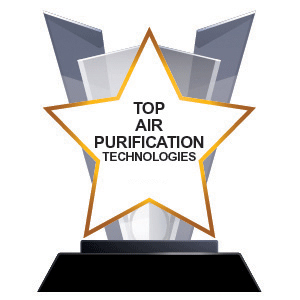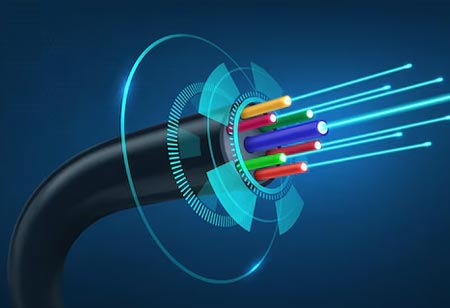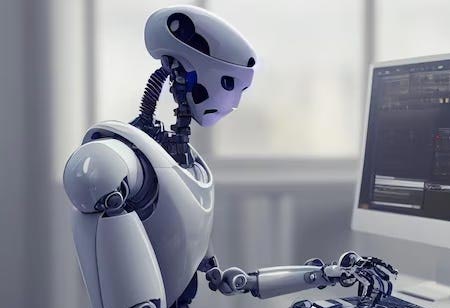THANK YOU FOR SUBSCRIBING

Top Air Purification Technologies

-
Clarity provides a comprehensive Sensing-as-a-Service℠ air quality monitoring solution, offering self-powered devices, cloud data management, and expert support. Its modular ecosystem allows real-time measurement of various pollutants, enabling flexible, cost-effective, and scalable air quality monitoring for communities and organizations worldwide.
-
GrayWolf Sensing Solutions is a global leader in indoor air quality and environmental instrumentation. It specializes in high-performance portable and fixed monitors for IAQ, toxic gases, and HVAC applications, offering advanced sensor technology, mobile and cloud-based platforms, and user-friendly reporting solutions.
-
GreenSavers is a certified B-Corp contractor. The company specializes in energy-efficient home solutions, offering services like indoor air quality testing, HVAC installation, insulation, windows, and energy audits. With over 5000 successful projects, it enhances comfort, efficiency, and customer satisfaction significantly.
-
PurpleAir offers affordable, high-accuracy air quality sensors that provide real-time data for monitoring particulate pollution, temperature, humidity, and pressure. Its sensors empower communities, organizations, and researchers to create air quality maps, support scientific research, and make informed decisions about environmental health.
-
WYND Technologies Inc., is dedicated to enhancing health and wellness through advanced air quality solutions. The company delivers AI-powered Halo monitor and medical-grade Max air purifier to continuously monitor and purify indoor air, ensuring safe, comfortable, and healthy environments for building occupants.
Top Air Purification Technologies
More in News
Exploring the Benefits of Optical Fiber Technology
Monday, November 03, 2025
FREMONT, CA: Optical fiber transmits information using light pulses rather than electrical pulses, resulting in hundreds of times the bandwidth of traditional electrical systems. Fiber optic cable can be sheathed and armored to withstand harsh weather conditions. As a result, it is widely used in commercial businesses, governments, the military, and various other industries for voice, video, and data transmission. Optical fiber is gaining popularity in both telecommunications and data communication because of its unrivaled benefits: quicker speed with less attenuation, lower susceptibility to electromagnetic interference (EMI), smaller size, and larger information-carrying capacity. Fiber optic cable types Single-mode fiber optic cable: The "mode" in fiber optic cable refers to the path that light travels. It only enables one wavelength and pathway for light to flow, resulting in significantly lower light reflections and attenuation. Single-mode fiber optic cable, which is slightly more expensive than multimode cable, is commonly used for long-distance network connections. Plastic optical fiber (POF): With a diameter of roughly 1 mm, it is a large core step-index optical fiber. The large size allows it to easily link large amounts of light from sources and connectors that do not require high precision. As a result, typical connector costs are 10-20 percent higher than those for glass fibers, and termination is straightforward. Plastic is more durable and can be installed in minutes with minimum tools and training. POF is more competitive for applications that do not require high bandwidth over long distances, making it a feasible solution for desktop LAN connections and low-speed short links. Advantages of optical fiber Thinner and lighter in weight: Optical fiber is thinner and may be pulled into smaller diameters than copper wire. They are smaller and lighter in weight than comparable copper wire cables, making them a better fit for areas where space is limited. Cheap: Long, continuous miles of optical fiber cable can be less expensive than comparable lengths of copper wire. As more vendors compete for market share, optical cable prices are sure to fall. Increased carrying capacity: Because optical fibers are significantly thinner than copper wires, they can be bundled into a cable of a given diameter. This allows for additional phone lines to be routed through the same cable and more channels to be sent to the cable TV box.
How is AI Enhancing Weather Forecasting?
Monday, November 03, 2025
Fremont, CA: Weather information became widely available following World War II, coinciding with the growing usage of television in homes. This was a watershed moment, signifying the transition from specialized use to public utility. As the internet emerged, it ushered in a new era of accessibility, making meteorological information more accessible. As computing power improved, so did our ability to advance forecasting techniques. Artificial intelligence is transforming and accelerating weather technology, and the next technological innovation will have a similar effect. Significant technology businesses have shifted their focus to weather forecasting. This spike in interest is unsurprising given the unique characteristics of weather data that make it perfect for artificial intelligence applications: it is copious, historical, and globally relevant. Weather is an excellent approach to engage my audience while displaying complex machine learning technologies. Weather and technology have grown inextricably linked, with AI at the vanguard of this collaboration. AI applications in weather are fast-growing, ranging from local point predictions to massive gridded worldwide forecasts and support for essential judgments. These technologies excel at bridging gaps in our existing understanding and computing capabilities, advancing meteorology science, and adding vital context to weather data. The next frontier of AI's impact on weather will be sophisticated large language models (LLMs) like the well-known Generative Pre-trained Transformer (GPT). This technology, sometimes called generative AI, provides remarkable flexibility and customization, allowing anyone to contextualize complex meteorological data swiftly. This facet of AI is changing how we comprehend and communicate weather occurrences. It is also being investigated as a potential step change in producing accurate weather predictions. This technology will profoundly alter meteorologists' and scientists' roles in the following years.
Essential Insights for Selecting Video Surveillance Systems
Monday, November 03, 2025
FREMONT, CA: Today's cameras in video surveillance systems are more sophisticated and efficient since they have computer-like functions including motion sensors, remote viewing, and mobile phone notifications. Additionally, technological advances have enabled more efficient methods for recording and storing data. Small businesses can purchase powerful surveillance systems at relatively affordable prices. Video surveillance systems for businesses require consideration of several factors. Storage capacity: Storage requirements depend on how many cameras you have, their resolutions, how much footage you intend to keep, and how long you plan to keep it. The footage from multiple cameras shooting at high resolution will quickly fill up storage. When a video recorder reaches its capacity, it may overwrite the oldest footage, but if you aren't careful, it might overwrite footage that you still need. An online tool can help you determine how much storage space you need based on the details of your system. Videos would be compressed into MJPEG files and stored on an NVR. A moderately sized system will need to handle quite a bit of data, so estimate what capacity you'll need. Make sure you keep a little cushion beyond the calculated amount so you can store any particularly relevant footage you may need in the future. Cloud storage: A video recorder and the cloud can be used to store recorded video. This has several advantages, including remote access to your videos and larger storage capacities. You will even have archived footage if you store videos in the cloud if your hardware is destroyed, stolen, or damaged. Make sure this won't consume all your network bandwidth and slow your network down. It is best to upload files to the cloud after peak business hours or schedule them for upload. Subscription fees are common with cloud services, especially when you want to store video files forever. Ensure the storage company protects your data with cybersecurity measures to get the most value for your money. Camera compatibility: Not all video recorders are compatible with all cameras. A DVR must use analog cameras, while an NVR must use IP cameras, but the compatibility question goes beyond these distinctions. It is possible for some NVR systems to only work with IP cameras manufactured by a particular manufacturer. Before making the purchase, it is important to determine whether a video recorder is compatible with your purchased cameras.
The Impact of Technological Innovations on SCADA Systems
Friday, October 31, 2025
Fremont, CA: SCADA systems are crucial in industrial automation, guiding manufacturing and utility management processes. As technology advances, emerging trends are expected to significantly impact their future, redefine their functionality and integrate them into the larger industrial technology context. As it has evolved, SCADA has become integrated with the Internet of Things (IoT), generating massive data that leads to better decisions and process optimization. SCADA systems have begun integrating with IoT devices to provide more accurate and timely data across numerous inputs, improving operational efficiency and giving more profound insights into system performance. It is revolutionizing the industry by adopting scalable, flexible, and cost-effective solutions that are much sought after by industrial requirements. These enable remote access to system data and controls, making management and troubleshooting easier. The shift towards the cloud has improved data storage and analysis capabilities for robust analytics and historical data review. Cybersecurity is essential because SCADA systems are rapidly intertwining with other digital platforms. With increased cyber threats today, more security systems are needed to protect sensitive industrial information and ensure the system's integrity. Future SCADA systems will likely incorporate more complex cybersecurity features, including advanced encryptions, multi-factor authentication, and continuous monitoring against potential threats. Advanced security protocols would be crucial in protecting these systems from cyberattacks while ensuring the dependability of critical infrastructure. AI and machine learning are also increasingly making headlines in the future of SCADA systems. AI algorithms can read vast volumes of data generated by SCADA systems to identify trends, predict when a piece of equipment needs to be serviced, and optimize all related processes. AI-powered predictive analytics can help prevent equipment failures, minimize time loss, and enhance system efficiency. Thus, AI in SCADA has marked a significant milestone in managing industrial processes more proactively, intelligently, and streamlined. The trend toward edge computing impacts SCADA systems. Edge computing is a form of data processing closer to the source rather than being sent to the centralized cloud or data center. Since this reduces latency and improves response times, it also reduces the amount of data needing to be transmitted over networks. This can enhance SCADA's real-time monitoring and control, making management decisions more efficient.
Unlocking the Benefits of Remote Temperature Monitoring
Friday, October 31, 2025
Fremont, CA: Remote temperature monitoring systems, now essential in modern labs, act as digital thermometers, providing superior oversight and adaptability. They ensure consistent and accurate temperature regulation, enhancing lab effectiveness and reliability. This technology streamlines operations, promotes precise experimentation, and drives innovation in the scientific community, allowing for greater focus on scientific inquiry. Safeguarding Precious Samples The heart of any laboratory is its inventory – delicate samples and vital compounds that demand precise environmental conditions. Remote temperature monitoring acts as a guardian, providing real-time data to ensure that each piece of equipment operates within exact parameters, preserving the integrity of these invaluable materials. Risk Reduction: A Proactive Approach The cost of losing critical pharmaceuticals or biological samples can be immeasurable. Remote temperature monitoring systems offer an affordable and easy-to-deploy solution that minimizes the risk of catastrophic loss. By continuously monitoring conditions and alerting staff to deviations, these systems provide a proactive approach to laboratory management. Around-the-Clock Peace of Mind With 24/7 monitoring capabilities, remote temperature systems offer lab managers and their teams the peace of mind of knowing their equipment functions perfectly at all hours. This constant vigilance is especially crucial during off-hours, ensuring that potential issues are addressed promptly, no matter the time of day. Liberating Lab Staff Manual temperature checks are time-consuming and can detract from lab personnel's core activities. Remote monitoring systems automate these processes, freeing staff to focus on the critical aspects of their work and enhancing overall operational efficiency. Ensuring Compliance with Ease Regulatory compliance is a cornerstone of laboratory management. Wireless sensor technology streamlines this requirement through automated temperature logging and reporting, ensuring that all data is accurately captured and readily available for audits or quality assurance reviews. The adoption of remote temperature monitoring represents a significant evolution in laboratory management. By addressing the challenges of safeguarding inventory, minimizing risk, providing constant monitoring, saving staff time, and ensuring regulatory compliance, this technology sets a new standard for efficiency and safety in the scientific community. As we progress, embracing these systems will be vital to operating a thriving, modern laboratory.
Revolutionizing Water Management: The IoT Advantage
Friday, October 31, 2025
Fremont, CA: IoT technology enables real-time monitoring of water systems, enhancing efficiency, sustainability, and cost reduction. It optimizes leak detection, conserves resources, and maintains infrastructure reliability. Real-Time Monitoring and Data-Driven Insights One of the most significant benefits of IoT in water management is the ability to monitor water systems in real-time. By installing IoT sensors on pipes, reservoirs, treatment plants, and water distribution networks, utilities can gather critical data on water quality, flow rates, pressure, and temperature. These sensors continuously send information to a centralized system, providing instant insights into the status of water infrastructure. This real-time monitoring enables utilities to detect potential leaks, blockages, or contamination before they escalate into costly and disruptive problems. For example, by identifying small leaks early, maintenance teams can fix them before significant water loss occurs, which is particularly vital in water scarcity areas. Real-time data helps optimize water usage and distribution by ensuring that water is delivered where needed most and preventing wasteful practices. IoT-driven data analytics can provide actionable insights to improve decision-making processes. Utilities can analyze historical data trends, predict future demand patterns, and adjust operations accordingly. This leads to better resource allocation, fewer water shortages, and a more sustainable approach to managing this precious resource. Improved Efficiency and Cost Savings In traditional water management systems, inefficiencies are often caused by outdated infrastructure, human error, and delayed responses to problems. IoT addresses these inefficiencies by automating processes and providing tools for continuous optimization. For instance, automated systems powered by IoT can adjust water distribution in real time, ensuring that pressure levels are consistent and water flow is balanced throughout the system. In treatment plants, IoT can monitor the performance of filtration and chemical treatment processes, ensuring they operate at peak efficiency and with minimal waste. By continuously monitoring energy usage and chemical consumption, utilities can reduce operational costs and lower the environmental impact of water treatment. IoT enables utilities to manage water storage better. By optimizing reservoir levels based on real-time consumption patterns and weather forecasts, utilities can reduce the need for over-reservation, preventing water wastage and ensuring that water resources are available when needed most.
















